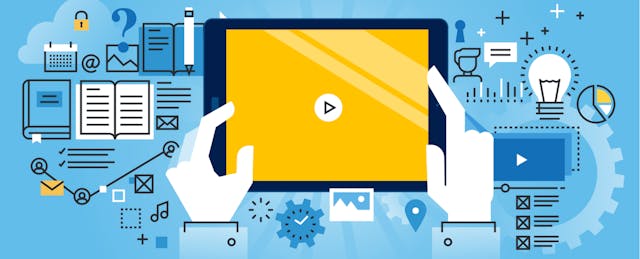One of the great challenges for any educator is how do you teach and test students on real world problems, not just on theoretical textbook examples?
Real world problems are exciting to solve but devilishly hard to assess, especially when there are many students involved. Yet that’s just the approach that Mark Schneider is helping lead at NAIT, a 40,000-student polytechnic school that offers one of Canada’s biggest apprenticeship programs.
What’s made the work possible, Schneider says, is a special combination of online learning tools that is helping NAIT educate students so they are prepared for the complexities and responsibilities of real world situations from the day they graduate.
Schneider, an Educational Technology Specialist at NAIT, sat down with EdSurge to share the top lessons he’s learned as he’s built NAIT’s online learning offerings over the past five years—including why delivering the kind of education that students crave is helping NAIT produce the kinds of graduates that employers want.
EdSurge: Why is it increasingly important to offer students the opportunity to learn online?
Mark Schneider: There are so many reasons.
As education prices rise, a lot of today’s students have to work on the side. Our institutional research with graduates and postgraduates and applicants tells us students often can’t build a timetable around their personal schedules.
They can't attend class between 1 pm and 3 pm because they’re working, or classes start at 7 a.m. when daycare doesn't open until eight. So we have to find ways to make certain courses accessible online so students can actually complete their required credentials.
Add to that, all students—not just digital natives—expect learning resources to be rich with animation or digital learning objects that make learning more realistic and relevant.
And then there are the benefits for the institution. NAIT wants to increase enrollment to meet the demands of industry and grow its base funding through tuition. Over the past five years, program areas that have started offering online courses have successfully grown their full-time enrollments by at least 8 percent.
Download this white paper → Using Digital Tools to Make Learning Fun, by Mark Schneider.
Which online education tools are you using at NAIT? How are they supporting your efforts?
We've created our own curriculum and use Moodle to manage our course content. Often instructional staff and designers work together to enrich our courseware with digital learning objects, virtual simulations and other sources of multimedia.
We use the Möbius Assessment platform from DigitalEd to tie all the various assets of our courseware together for assessment purposes. This vastly increased the validity and authenticity of our assessments. And since we adopted Möbius we’ve noticed a large percentage of faculty are now turning toward computer-based assessment.
With this platform, we’ve been able to differentiate our instruction for students.
Students entering our engineering or math-based courses often come from dynamic backgrounds with very different learning abilities and very different prerequisites.
Some may have PhDs from other countries that are not recognized in Canada, and they're excelling at a rapid pace to the point where they probably could be teaching the course. Others are really struggling academically with the course.
Möbius Assessment allows us to build some really dynamic mastery learning-type of assessments. We can build digital learning objects into our courseware that effectively lets some students get to a standardized level in seconds, even as other students might tinker with it for days on end to reach that standardized level.
It uses a logic engine that analyzes a student's level of understanding of a specific topic. If that student is struggling, it can open up the door to additional resources or courseware that can help the student unpack what's needed to achieve. That is really profound when it comes to assessment.
When it comes to online assessments, what kinds of measurable outcomes in student learning do you look for?
We're leading the students to industries and careers that have really high safety standards. If those students haven't deeply mastered those safety standards, then potentially things could very much fall apart for those workers or their employers.
We want to make sure our students are ready to tackle any complexities the work environment will throw at them. If our assessments and outcomes are vague, our students could be blindsided by what they encounter in the world of work.
Measurable outcomes give us an opportunity to make sure that we're matching the specific needs of an industry.
Our platform allows us to build assessments and courseware that are crafted toward the degree of correctness as it pertains to a learning objective as well as the adopted "style" of the student.
For example, say we’re assessing an engineer who is choosing the size of rebar. We don't want to just judge the engineer based on the ideal choices. We want to assess his or her choices based on what materials are available, the style of the project and cost. That means we can develop a highly customized assessment of the choices that the engineer makes.
That is exceptionally unique. It's something that we don't normally see because it requires an incredible amount of open-endedness to student responses.
Why is it so important that course content be relevant and authentic?
Number one, you want your students to be engaged. So you need to make your material as relevant and engaging as possible, especially in STEM-related courseware.
If you have students asking, "When am I going to use this?" you're probably not doing a good enough job making sure that material is relevant to their industry.
But also as a polytechnic school, our students enter a workforce where other people depend on them and on certain safety principles—and on how well our graduates can apply their knowledge.
Customized content helps us do that in a way that's safe and relevant. Even better: if students have trained using customized content, they are instantly more valuable in the workplace, potentially allowing them to progress through the corporate ladder at a higher pace.



